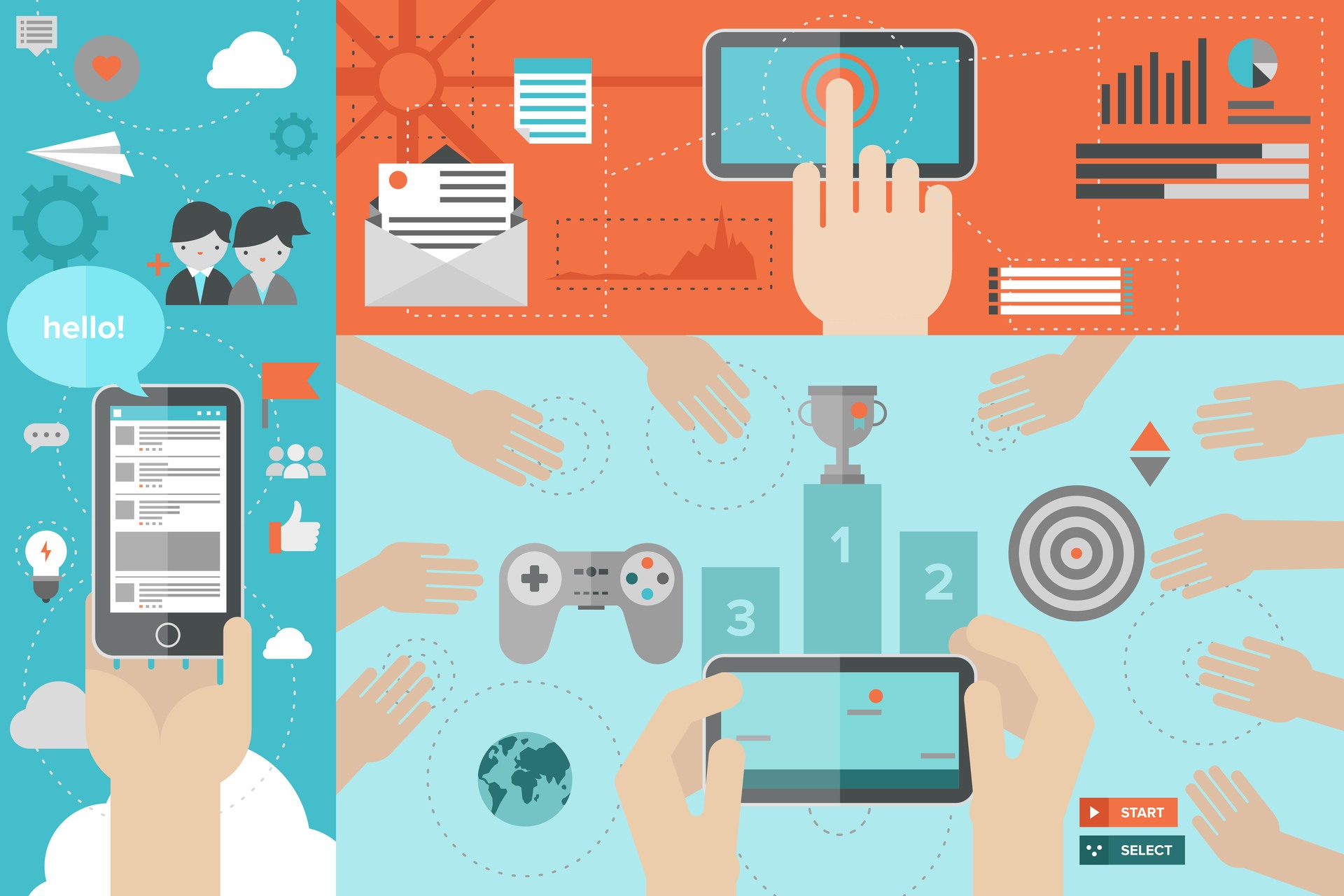Gamify eLearning To Make It Fun!
Gamification in eLearning has become an increasingly popular approach to motivating and engaging learners in the digital age. By incorporating game-like elements such as points, badges, and leaderboards into the learning process, eLearning gamification seeks to enhance the overall learning experience and improve learning outcomes. One of the key advantages of gamification in eLearning apps is that it can make the learning process more enjoyable and interactive. By providing learners with a sense of progress and achievement, gamification can motivate learners to stay engaged and persist in their learning efforts.
This can be particularly effective in areas where learners may struggle with motivation, such as in compliance training or technical skills development. In addition to motivating learners, gamification in eLearning can also help improve retention and knowledge transfer. By creating immersive learning experiences that allow learners to practice and apply their knowledge in a safe, simulated environment, gamification can help learners to internalize and retain new concepts more effectively.
However, eLearning gamification is not a one-size-fits-all approach, and it is important to carefully design and implement gamification elements that are appropriate for the specific learning context and audience. When done effectively, gamification in eLearning can be a powerful tool for enhancing engagement, motivation, and learning outcomes. In this article, we’ll be covering the key aspects.
Gamified eLearning: Why Gamify eLearning Apps?
eLearning gamification involves the integration of game mechanics and elements into eLearning apps to enhance the learning experience. It has become an essential tool in online education due to the significant benefits it offers to learners. One of the most important benefits of gamifying eLearning apps is that it can increase learner engagement. By incorporating game-like elements such as badges, points, and leaderboards, learners are incentivized to complete the course and stay engaged. This, in turn, can lead to better learning outcomes.
Another vital benefit of eLearning gamification is that it can help learners to retain information better. Gamification provides learners with a fun and interactive way to learn, which can make the learning experience more memorable. This can be particularly useful in technical or complex subject areas where information can be difficult to retain.
Gamifying eLearning apps can also promote a sense of competition among learners. By incorporating leaderboards, learners can compete with one another, which can motivate them to work harder and achieve better results. This can be particularly useful for learners needing an extra push to stay motivated.
eLearning Gamification: How To Gamify eLearning Apps
Learning can be a monotonous process, even if there's no ideal age for it. Hence, by using the following methods, eLearning apps can be gamified as a fun way to learn.
- Badges and certificates
Learners can earn badges or certificates for completing modules, quizzes, or assessments. This provides a sense of accomplishment and recognition for their efforts. - Leaderboards
Leaderboards can be used to display the progress and achievements of learners. This can create a sense of competition among learners and motivate them to work harder. - Points and rewards
Learners can earn points for completing certain tasks or modules. These points can be redeemed for rewards such as access to additional content or exclusive learning materials. - Scavenger hunts
Scavenger hunts can be used to help learners explore and interact with the eLearning app. This can make the learning experience more engaging and interactive. - Role-playing simulations
Role-playing simulations can be used to help learners apply their knowledge in a real-world context. This gamification strategy can make the learning experience more relevant and memorable. - Mini-games
Mini-games can be incorporated into eLearning modules to help learners reinforce their knowledge in a fun and interactive way. - Storytelling
Storytelling can be used to create a narrative around the learning material. This can make the learning experience more engaging and help learners to retain information better.
eLearning Gamification Market Revenue
With different features, an app can easily generate revenue. In the era of eLearning apps, generating revenue is not a big deal for this blue ocean turned red. Here’s a quick look at the global revenue market of eLearning apps.
The global eLearning market, according to Statista, is expected to grow up to 400 million USD by 2026. The sole reason for this is the wider acceptance of eLearning apps among different age groups. Since the need for adjusting the schedule as per the online classes is curbed, people are increasingly inclined toward using eLearning apps.
The Psychology Behind Gamifying eLearning Apps
The psychology of gamifying eLearning apps is rooted in the idea that incorporating game elements and mechanics into the learning process can enhance motivation, engagement, and retention of information. eLearning gamification refers to the use of game design elements in non-game contexts, such as educational settings, to create a more interactive and enjoyable learning experience. Some of the key benefits of gamification in eLearning include:
- Increased motivation
Gamification in eLearning can increase motivation by tapping into the intrinsic desire to achieve goals, progress, and earn rewards. - Improved engagement
Games are designed to be engaging and fun, and incorporating game elements into eLearning, can increase engagement and encourage learners to spend more time on the learning activities. - Enhanced retention
Gamification in online learning can improve retention by providing learners with opportunities to practice and apply what they've learned in a safe, low-stakes environment. - Personalization
Gamification can be customized to meet the individual needs and preferences of learners, which can help them stay motivated and engaged throughout the learning process. - Feedback
Gamification can provide immediate feedback to learners, which can help them adjust their learning strategies and stay on track toward their goals.
Overall, eLearning gamification can be an effective way to promote a positive learning experience, increase engagement and motivation, and improve the retention of information. But does that impact the future of gamifying eLearning apps? Let’s discuss the future of eLearning gamification.
The Future Of Gamification In eLearning
The future of eLearning is likely to continue incorporating gamification as a way to improve engagement and retention of information. Gamification in eLearning involves incorporating game design elements, such as points, badges, and leaderboards, into the learning experience to make it more interactive and enjoyable.
Another emerging trend in eLearning is personalized learning. This involves using data and analytics to create customized learning experiences that are tailored to the individual needs and preferences of each learner. Personalized learning can include customized content, pacing, and assessment strategies. Overall, the future of eLearning is likely to involve a continued emphasis on gamification, personalized learning, Augmented and Virtual Reality, mLearning, and AI to create more engaging and effective learning experiences.
Parting Words
eLearning gamification is a powerful tool for improving engagement, motivation, and retention in online learning. By incorporating game design elements into eLearning, such as points, badges, and leaderboards, learners are more likely to stay engaged and motivated throughout the learning process. As the future of eLearning continues to evolve, gamification in eLearning is likely to remain a key strategy for creating effective and enjoyable learning experiences.









